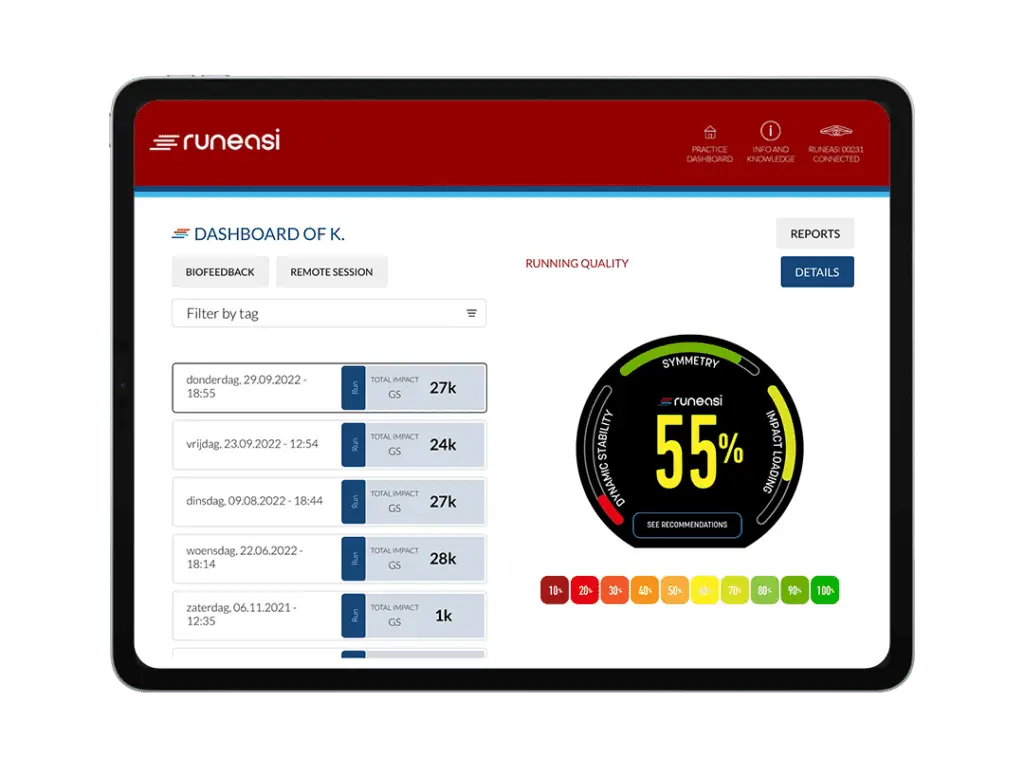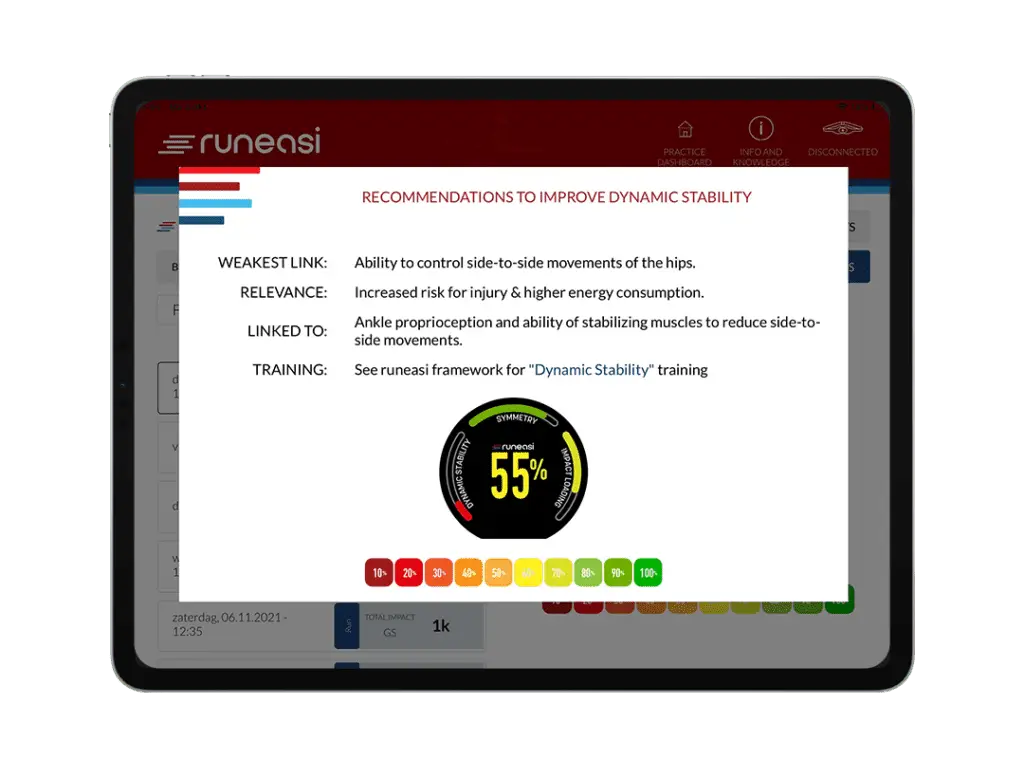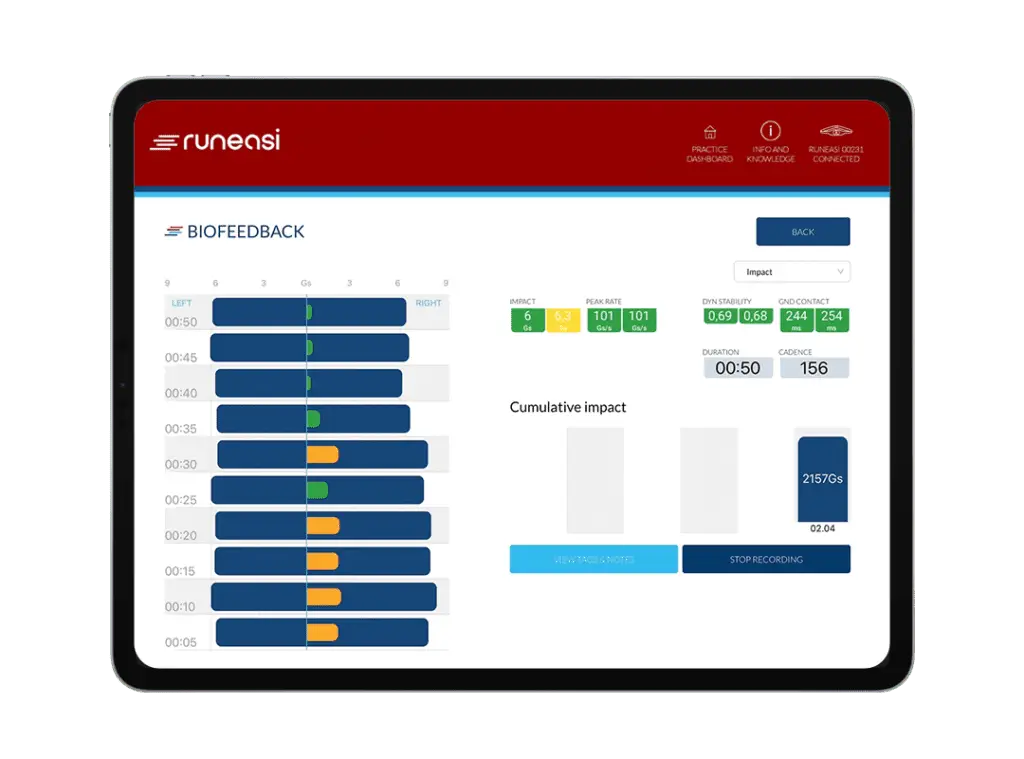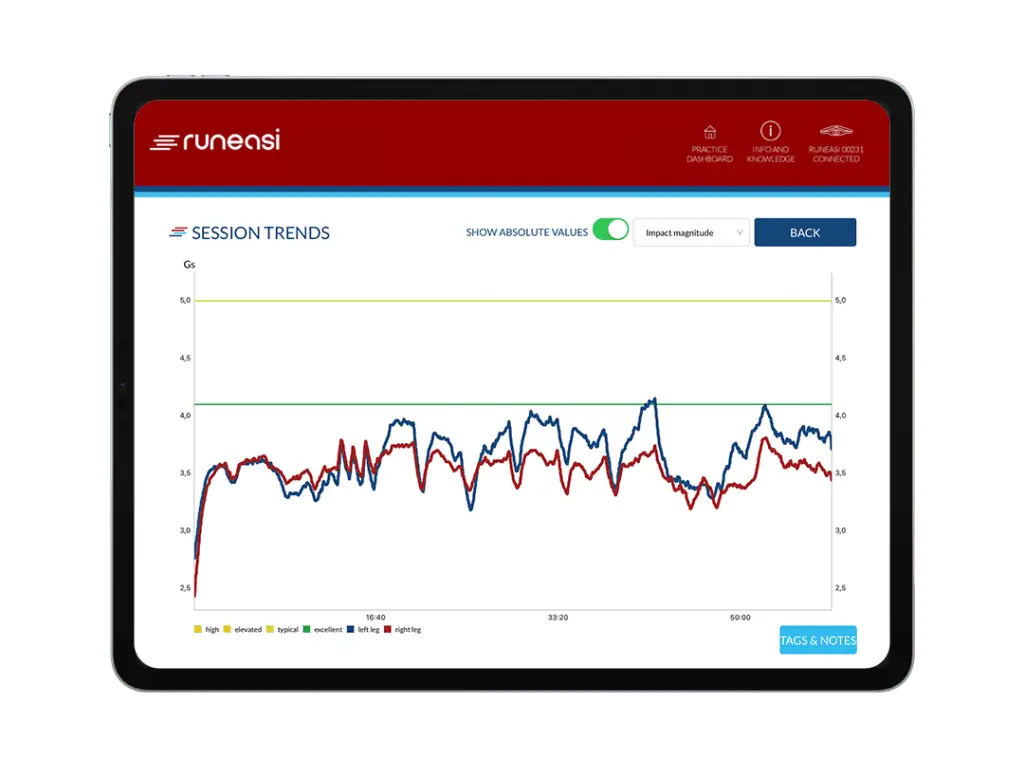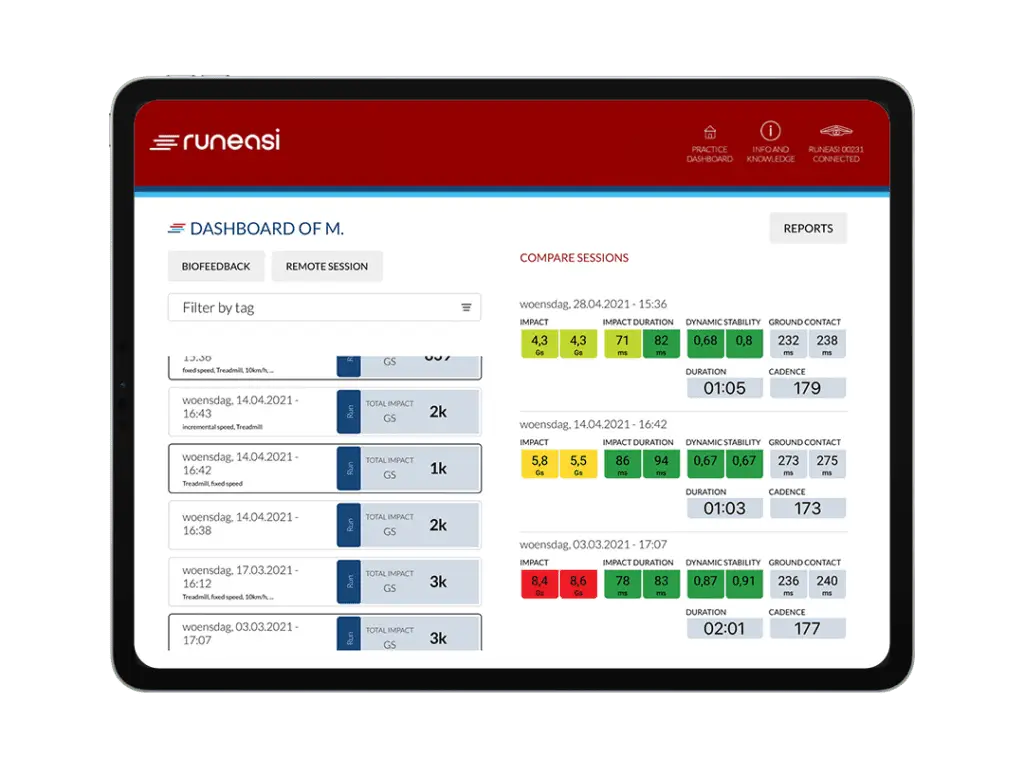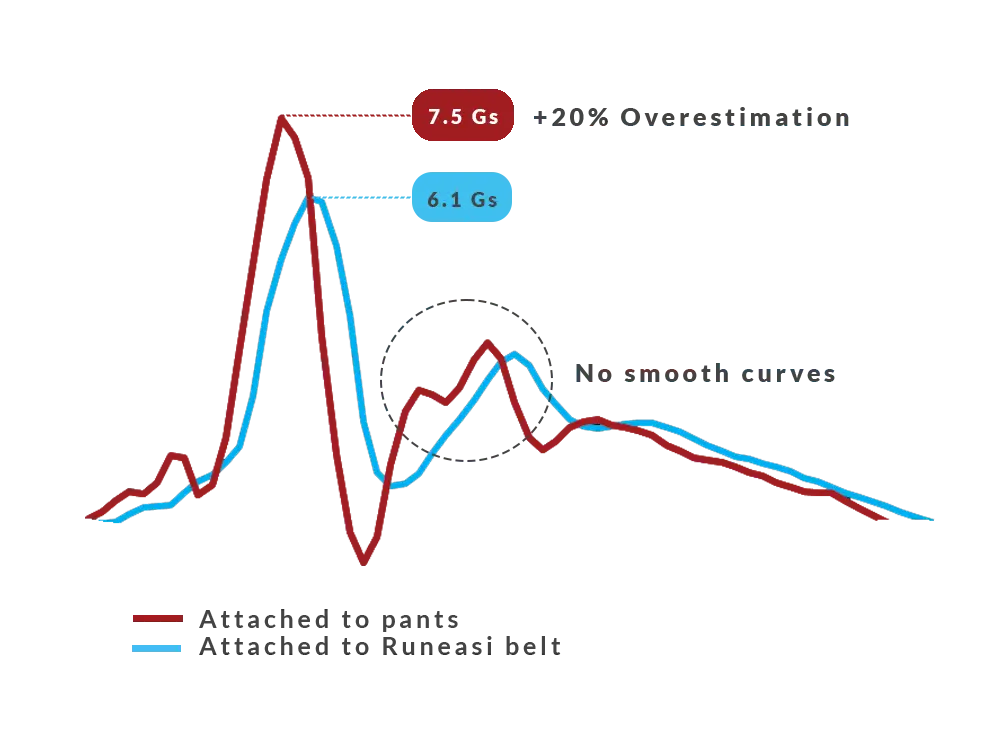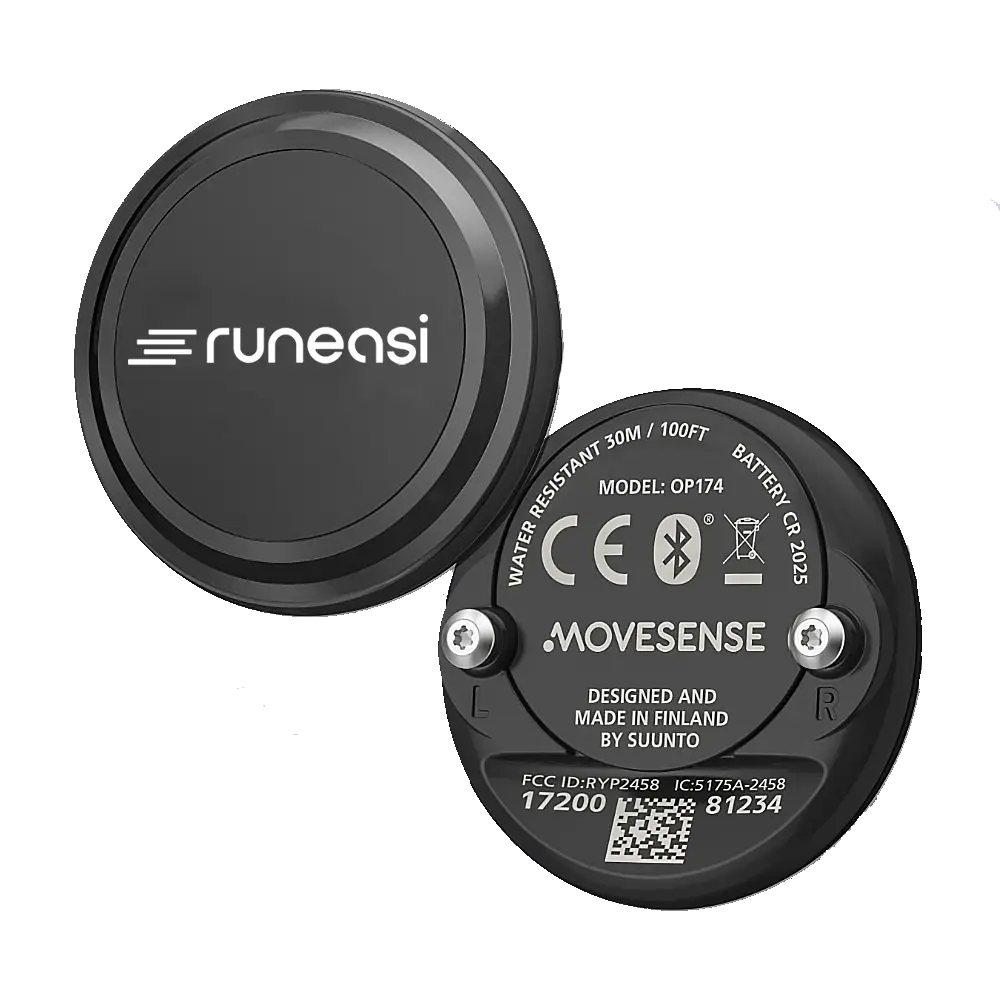symmetry
Learn about:
What is symmetry?
Symmetry refers to left vs right balance in biomechanical parameters measured by Runeasi. Poor symmetry can be a cause or consequence of injury and plays a role in running efficiency. Therefore, It’s important to address left vs right differences and work on these imbalances.
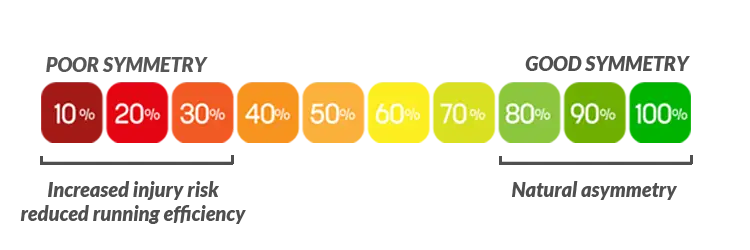
It is important to note that higher or lower values on the injured leg can potentially indicate different conditions. To better understand this, it is crucial to recognize two distinct categories: overloading and protective gait patterns.
Overloading pattern
The overloading pattern refers to a condition in which the injured leg exhibits worse values. This imbalance can both contribute to and result from your injury. It is essential to improve this left-to-right imbalance in order to enhance robustness and running efficiency.
Protective pattern
The protective gait pattern refers to a condition in which the injured leg exhibits better values. This imbalance is typically a consequence of injury to reduce the load on the injured leg. It’s essential to restore balance and make the injured leg ready for loads again.
Exercise training to improve symmetry
To enhance your symmetry, consider incorporating additional single-leg exercises into your training. Provide greater focus, intensity, and/or volume (reps or sets) to the weaker leg.
Select the parameter in which you need to improve your left-to-right imbalance.

